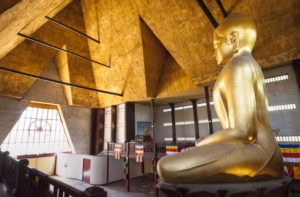THE REMARKABLE STORIES OF THE THREE PARIS PAGODAS – Part 2
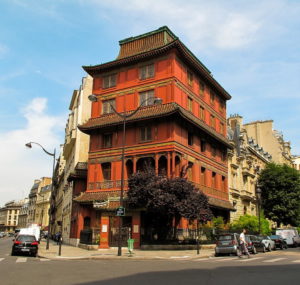
This story continues on from my previous post about one of the three Paris pagodas, the Japanese-style pagoda, known as La Pagode, which was converted to a much-loved cinema. The other two are equally fascinating, with their own surprising stories to tell.
The three Paris Pagodas are as visually startling, unexpected delights today as they were when first created.
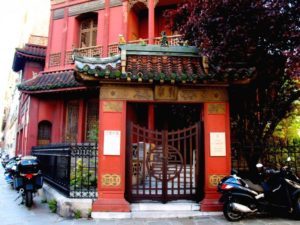
La Pagoda Paris, is an imposing Chinese-style red pagoda situated in an elegant, discreetly wealthy part of the 8th arrondissement, not far from the beautiful Parc Monceau.
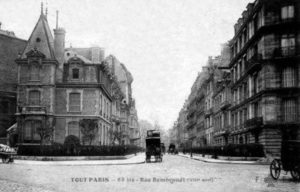
It was originally a hôtel particulier, constructed in 1880 in the Louis Philippe style of classic 19th century Haussmann buildings. But by the 20th century, things were changing. In 1903 a wealthy art dealer named Ching Tsai Loo moved to Paris. He had galleries in New York and Paris supplying American museums with Chinese artefacts—these activities earned him widespread criticism for removing culturally valuable artworks from China and selling them to the West.
His defenders point to his generosity, recalling that he would often lend pieces to museums at his own expense, also reminding critics that he saved many Chinese antiquities from certain destruction during the frenzied vandalism of temples brought on by Mao’s Cultural Revolution.
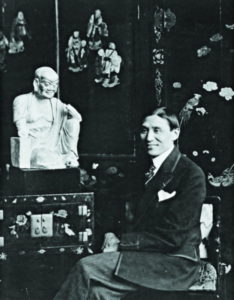
Mr Loo had been an art student in Paris at the end of the 19th century, and by the age of 22 had already set up a business dealing in Oriental antiques which proved successful due to his privileged Chinese connections.
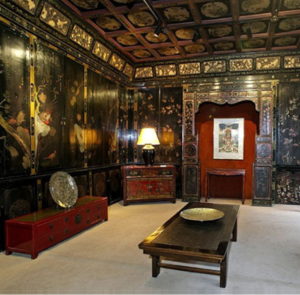
When he moved to Paris permanently, he knew that the area around the Parc Monceau was where he wanted to live. He purchased the Haussmann building with the intention of converting it to something that was a reminder of his Chinese heritage, much to the dismay of his neighbours—this was in the days before the requirements of compliance with building regulations.
With his vast wealth, his dream became a reality in 1926, when the building works were completed, under the joint direction of prominent architect Fernand Bloch and Mr Loo.
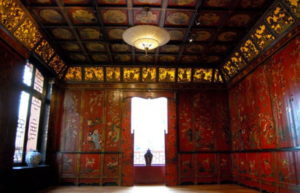
From then on, the Pagoda became the focal point of his entrepreneurial endeavours until Mr Loo’s death in 1957. The business fell into decline and his family were forced to sell the Pagoda to a private collector.
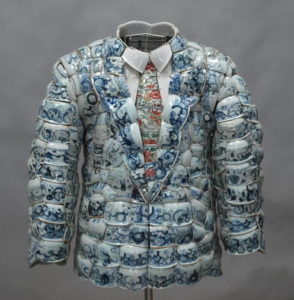
During his lifetime, Mr Loo amassed an enormous portfolio of prints, over 1,300 books, catalogues and manuscripts, which survive to this day. By the time it closed, Mr Loo’s gallery was the oldest Asian art gallery in Paris specialising in exquisite Chinese and Asian art, antiques and objets d’art.
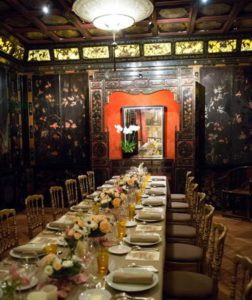
In 2011, the Pagoda was refurbished by a wealthy benefactor and operated as a private museum, and became the venue for many cultural events, receptions, formal dinners and auctions.
The sumptuous interior features fine architectural details including elaborate Shanxi lacquer panels in thematic rooms such as the Salle Indienne, the Salle Cavaliers and the Petit Salon Porcelaine.
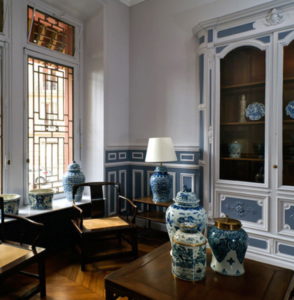
Now known as the Galerie Pagoda Paris, this classified historical monument opens to visitors when there are temporary exhibitions—usually Wednesday to Saturday.
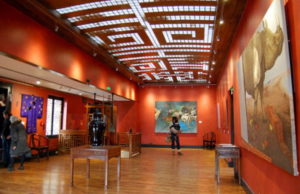
The Pagoda has become a point of cultural exchange between Western and Eastern art with exhibitions of work from both new and emerging artists whose cultural roots are in China and the Asia Pacific region.
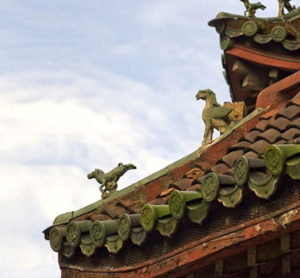
With its red-painted façade and sloping roof, jade tiles and other Chinese architectural features, it’s such an anomaly, in dramatic contrast to the typical fine Haussmann buildings of the 8th arr.
This architectural gem is easy to find, near the Parc Monceau in one direction, and the Musée Jacquemart-Andre in the other, and only a little more than a 10 minute walk from the Champs Élysées.
The Galerie Pagoda Paris is at: 48, rue de Courcelles, cnr. rue Rembrandt, Paris, 8th arr.

Known as La Grande Pagode, or the Pagode du Vincennes, the third Paris pagoda is a hidden gem on the edge of lac Daumesnil in the heart of the Bois de Vincennes.
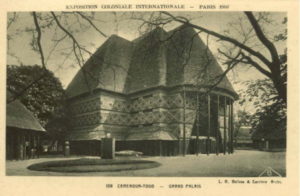
It’s located in one of the two remaining buildings from the Exposition Coloniale de 1931, designed by the architect Louis-Hippolyte Boileau as the Pavilion de Cameroun.
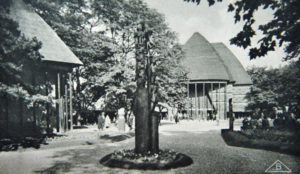
After numerous earlier alterations, it was restored in 1977 and transformed into a 28 metre high pagoda as a place of worship, especially for those who had fled war and oppression, such as the Vietnamese and Khmer communities. The second remaining building, the former Pavilion de Togo, is programmed for restoration by the City of Paris, and destined to become a library for Buddhist texts.
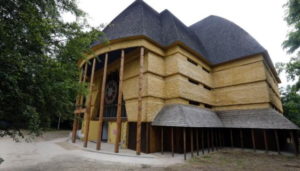
The Exposition Coloniale was a six-month long exhibition whose mission was to present the products and achievements of all the French colonies, as well as those of the main colonial powers, in pavilions designed to suggest the architecture of the territories, particularly Africa, Madagascar, Indochina, Syria and Lebanon. The French government brought artisan craftspeople from the colonies to Paris to recreate their indigenous crafts, and build over-scaled reproductions of their traditional buildings such as huts or temples. Some 7 million people from all over the world visited the Exposition. Unfortunately, only two of these structures have survived.
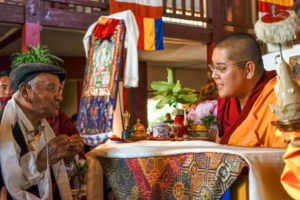
Today, the pagoda is used by various Buddhist schools in the Paris region as a common place of worship, and is without a religious leader. It is the headquarters of the Buddhist Union of France and houses the biggest Buddha in Europe, covered in gold leaf, and reaches a height of 10 metres. The statue was created in six parts in the artist Joan Miró’s atelier and reassembled in-situ.
Relics of the Buddha arrived in May 2009 direct from Bangkok’s Wat Saket Temple to be deposited in the Grande Pagode, in order for it to become the spiritual centre of Buddhism in Europe. Eight years later in 2017, the Grande Pagode of the Bois de Vincennes was inaugurated, after major renovations, financed by the City of Paris.
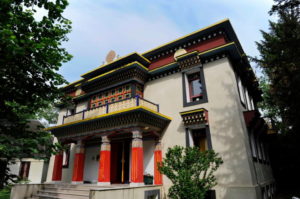
A Tibetan Buddhist temple named Kagyu-Dzong was built in the 1980s in front of the Pagode which offers many activities with a variety of French and Asian teachers. Thus, people can learn the basics of Buddhism and meditation, participate in a yoga session or take a Japanese calligraphy class, or perhaps a Tibetan language lesson.
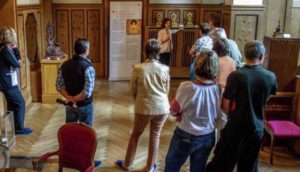
The pagoda is only open to the public from April to October for special teachings and for Buddhist holidays such as the Fête du Buddhisme in May. The most popular event is the Himalayan and Tibetan Festival, also called the festival of the Tibetan Cultures, in September.
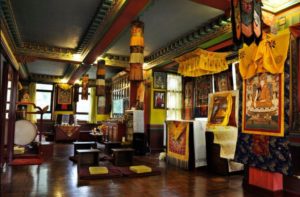
The Pagode du Vincennes is a unique monument, not only because of its rather strange African shape, but because it crystallises some of the most complicated cross-cultural heritages and influences: colonialism, war, exile, and cultural identity and survival for so many people.
Location: 40 Bis Route de Ceinture du Lac Daumesnil, Bois de Vincennes, 12th arr.
